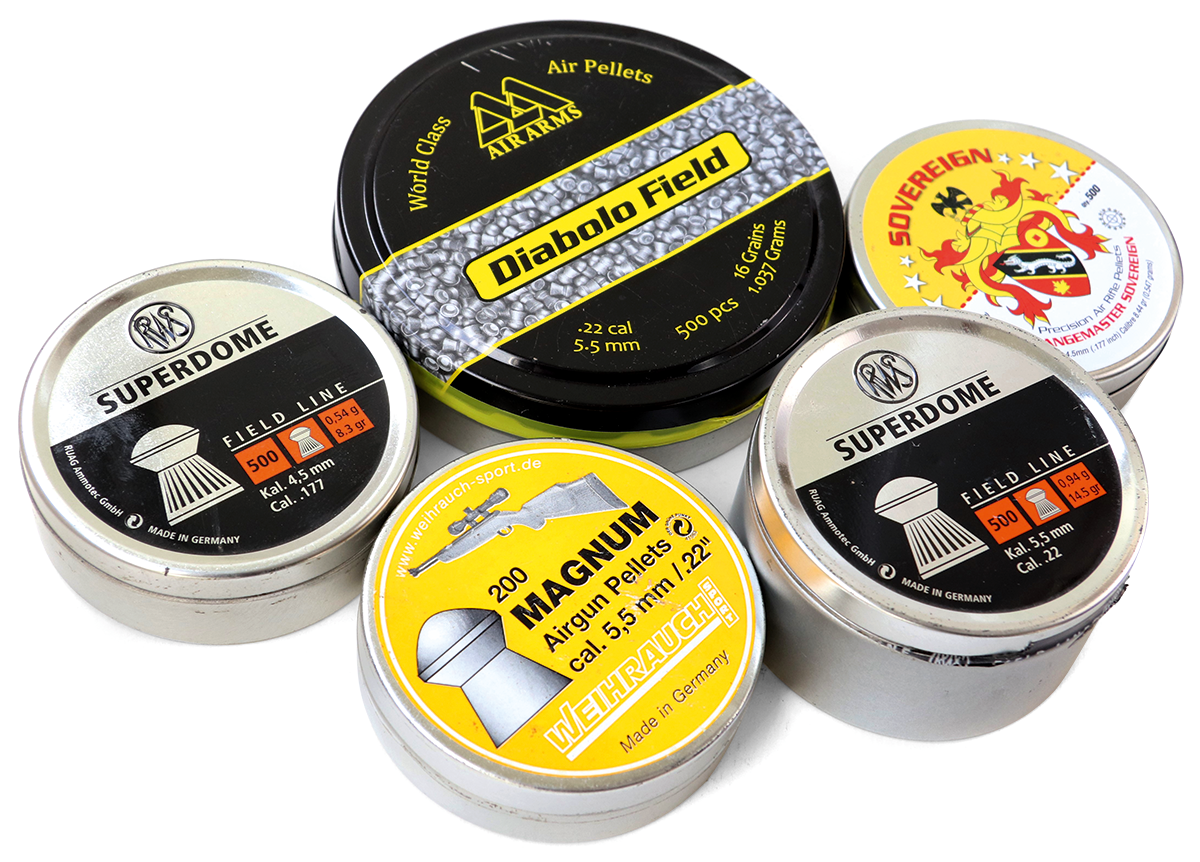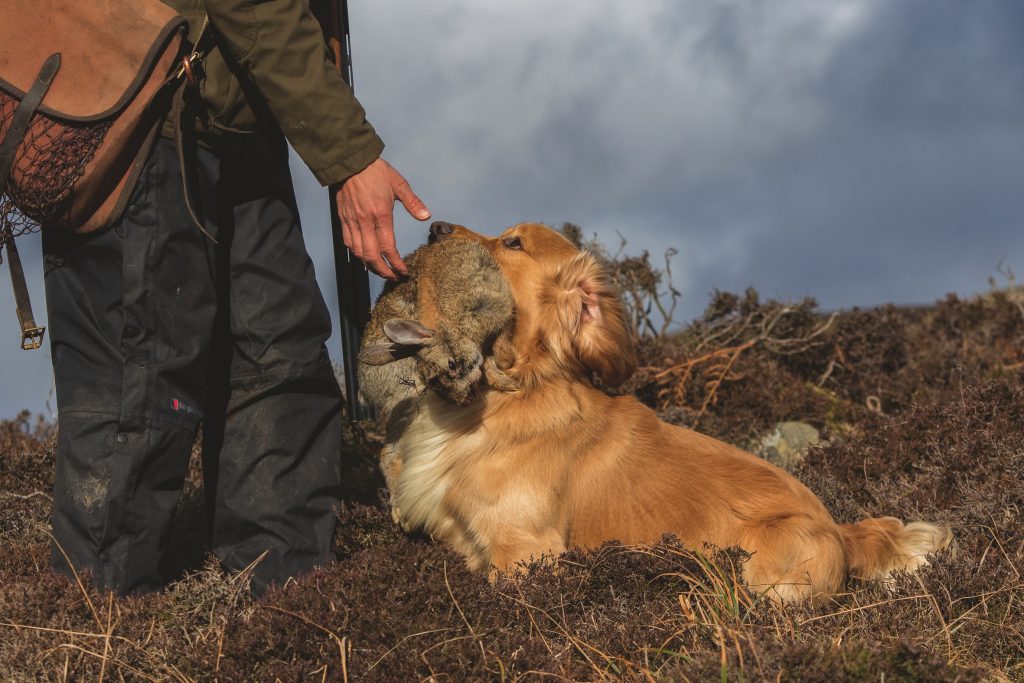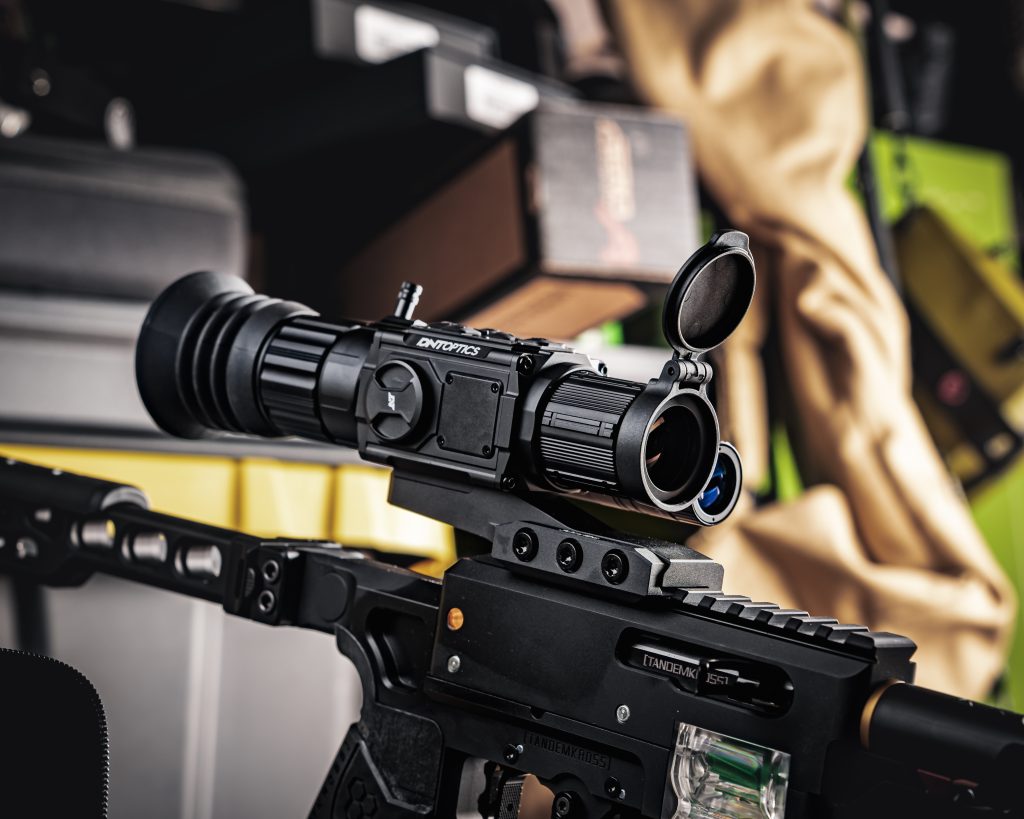Win CENS ProFlex DX5 earplugs worth £1,149 – enter here
What makes the perfect airgun pellet?
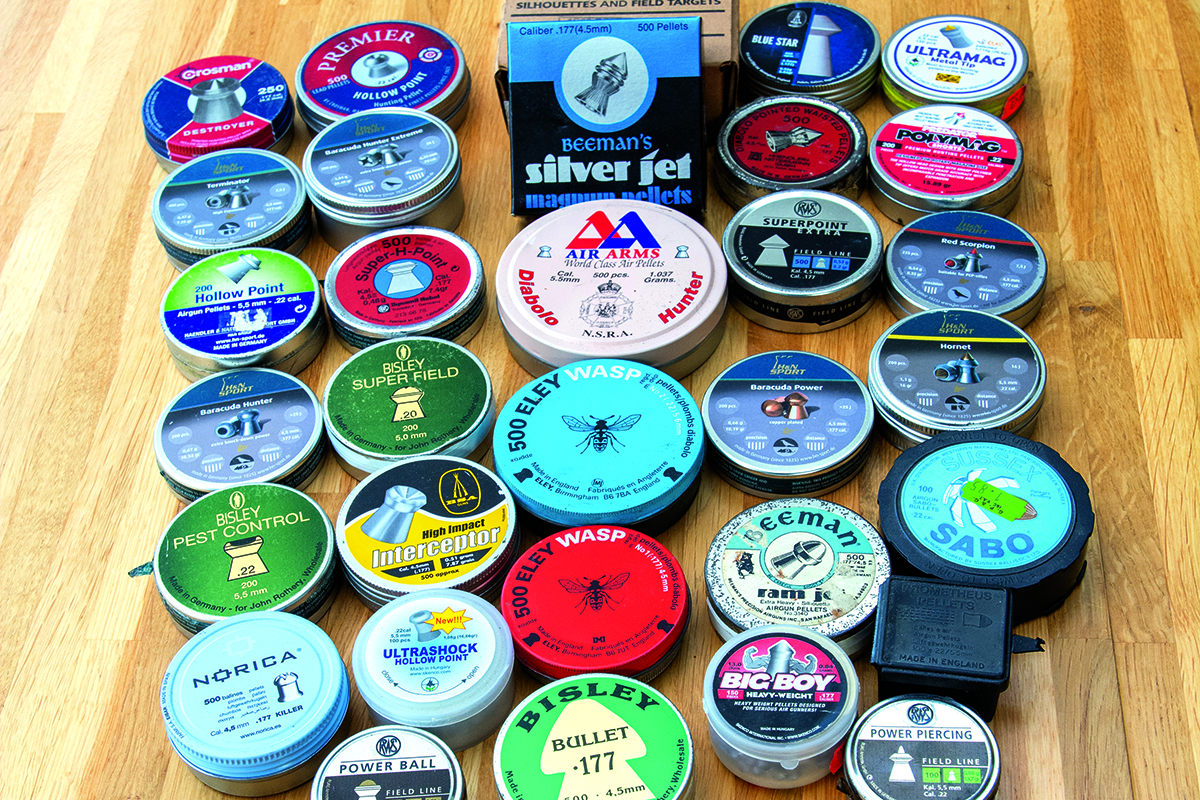
As a young man, I was forever looking for anything that would make me a better hunter, and I always believed that one day I’d find a magical airgun pellet that would let me achieve my goal. I could never pass a gun shop without browsing through the pellet shelves, searching for some innovative design that would guarantee that any rabbit I targeted would be as good as in my game bag. I bought every type of pellet I saw, which has left me the proud owner of a massive pellet collection that must weigh a ton – almost literally!
My early airgunning career saw me shooting simple lead roundheads like everybody else, which were OK, but cheap, so were probably not all that well made. This meant that they weren’t very accurate, and even back then I understood that accuracy was key to good airgun pellet placement that in turn equalled clean kills.
The airgun pellet I aspired to was the now classic Eley Wasp, clearly very well made and manufactured from quite a hard lead alloy. This ensured that few of them came out of the tin bent or dented, and therefore they flew more accurately than other brands. But high quality also meant high price, and this was something I came to recognise well over my life. They were made in England to imperial dimensions, and were therefore well-suited to the Webley and BSA barrels most of us used in those days.
As good as they were, the inquisitive part of my mind was still drifting elsewhere, towards the mysterious pointed pellets that just looked so good! They were rare, but now and then I’d find a tin and rush to try them out. I felt sure that they’d offer deeper penetration, which must be a good thing, right?
As I now know, they offered shallower penetration, and deep penetration is rarely a benefit to the airgun hunter anyway. But, boy, did they look good.
As I became tempted by German-made rifles, German pellets were becoming more available, understandably sized in metric dimensions to suit, and bringing with them more choice, with the RWS Superpoint and H&N Pointed models seen as highly desirable. Around this time, Robert Beeman’s American company was rebranding many manufacturers’ pellets and guns, presented in the very slick and professional Precision Airgun Guide. He made great claims about pellet performance and I believed every word, making me hungry to find more airgun pellet designs to test.
Put to the test
Of course, accuracy tests were valid, but some are quite laughable looking back. The most popular one was shooting into old Yellow Pages directories. We thought if one airgun pellet made it through to Plumbing, it must have been better than the other that only made it to Microwaves.
We now know that layers of compressed paper shot close to the muzzle of a rifle tell us nothing about hunting performance, but hey, they were innocent times for me.
I also shot to see how many tin cans a pellet would pass through, into Plasticine, soft wood, ice, fruit and vegetables – none of which taught me anything, but I had lots of fun trying.
While pointed pellets were still cool, I came across the Beeman Silver Jet, which looked magical in my eyes. Beeman referred to them as ‘Magnum Pellets’, and come on, who doesn’t want pellets with a name like that? Rare and very expensive, these tiny jewels came packed in a shiny cardboard box that had polystyrene padding inside to keep them safe. They were beautifully made and, from my rifle at least, very accurate.
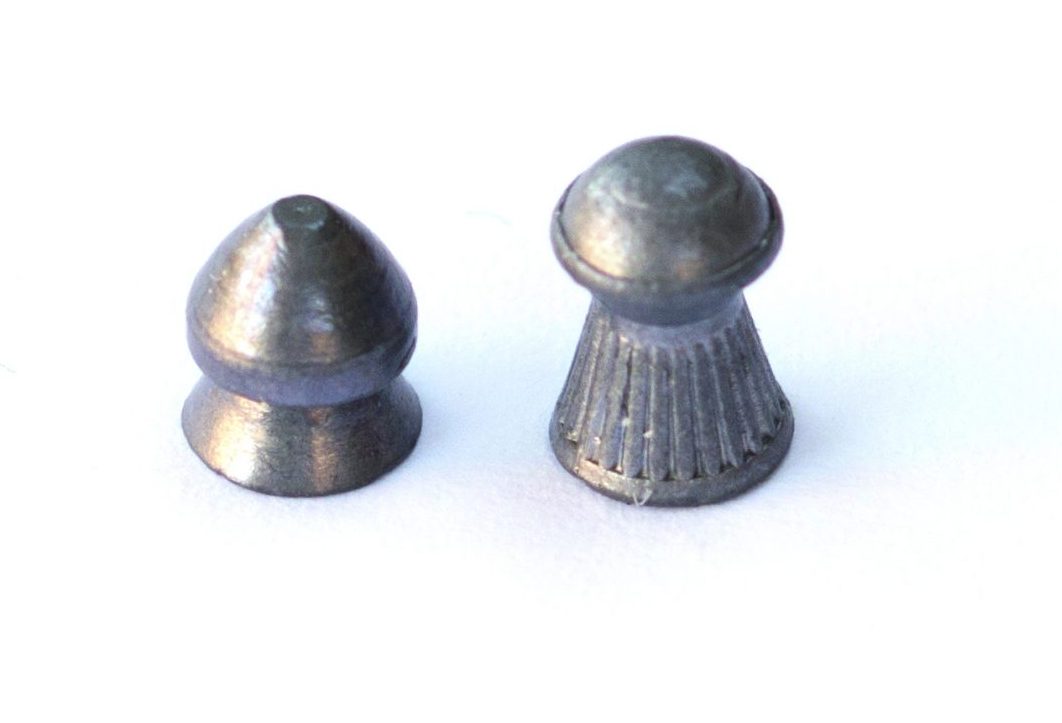
The Bisley Bullet had the contact points with the barrel too close together, while the Beeman Ram Jet was heading in the right direction
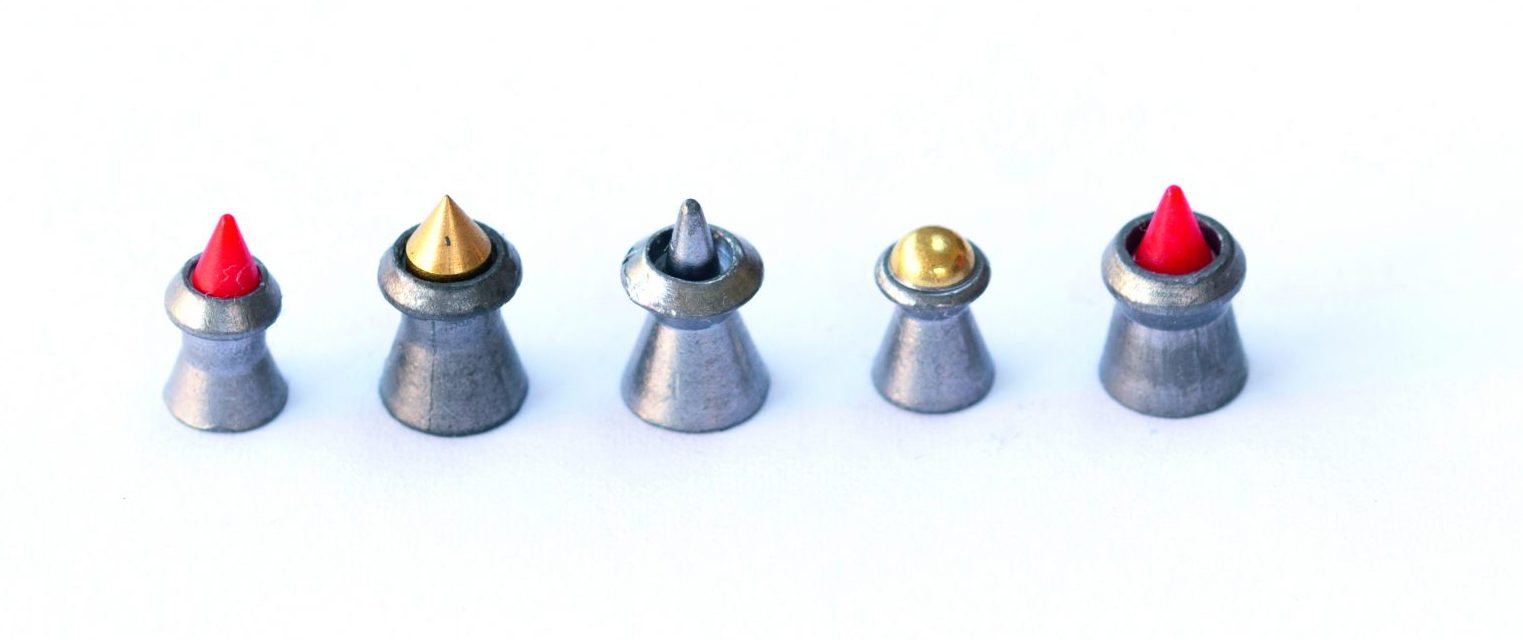
The Predator Polymag, with its red conical plastic point hiding in a hollow beneath, spawned a whole host of clones and wannabes
To this day, I still remember making a spectacular shot that very cleanly took a squirrel from the top of a tall tree with that pellet, even though it was some 45 years ago. So you’d think that I’d have been content, but no – there were always new airgun pellets to be tried.
An altogether more radical design arrived in the form of the Prometheus, which was even more startling in appearance. It had a plastic body with a hard metal core that looked shocking, and naturally I bought some as quickly as I could. Claims of extreme penetration were made, and suddenly I was shooting at thick oil cans and the like to see if the steel core really would puncture them.
Just why that would have been good never crossed my mind. However, like many of the designs we see in this article, their accuracy never matched lead pellets in my tests, and they joined all the others in my collection on a shelf that was becoming ever-more dusty.
Walking past my local gun shop one evening, I saw an interesting poster in the window describing how a truly revolutionary airgun pellet design was about to change my life. These pellets looked fascinating and were unlike anything I’d ever seen before. Surely they would contain the magic. I was hooked, and couldn’t wait until the following Saturday so that I could go back and buy some.
The Sussex Sabo was modelled after large military projectiles that launched a smaller-than-calibre round inside a disposable sabot that made the proper seal in the barrel. It’s easier to understand from the picture than a written description.
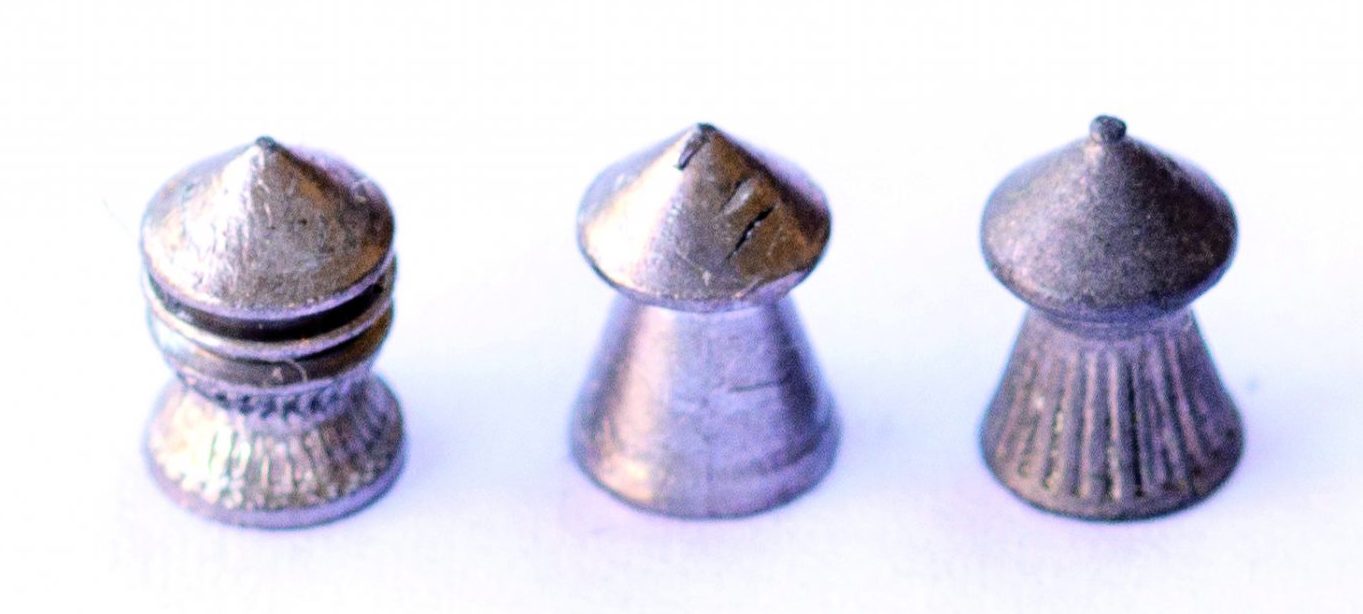
Pointed pellets may look great, but are seldom accurate, except perhaps the Beeman Silver Jet (left). Note the wonky tips on the others
The genius was that we could fire true bullet-shaped projectiles from airguns, and these would have hugely superior ballistic coefficients compared with the waisted diabolo pellets we all knew. This would mean a flatter trajectory, less wind drift and more energy on target. Perhaps this really was the Holy Grail, I thought. In reality, the product was slightly underdeveloped as released for sale and yet again couldn’t deliver the accuracy needed to make the cut.
I learned many years later that everything needed to make it a winner was in place, but a legal wrangle with a competitor blocked its progress and the project died. A great shame in my eyes.
Perhaps one of the most appealing ideas for a better airgun pellet was the hollowpoint. The idea was that on impact, the pellet would deform, expand and impart more energy into quarry.
In the world of firearms, this is an everyday technique, but as I’ve seen all too many times, firearms principles just don’t work in our world. Our muzzle energy is only a tiny fraction of what even a modest firearm produces, and we airgun shooters need to understand that.
Hollow pursuit
Fast-forward to my collection and you’ll quickly see tin after tin of hollowpoints that I have tried over the years. I have to confess that I really did see them as the Holy Grail, but sadly they let me down. Some were widely accepted as successful, such as the RWS Super H-Point. In reality, they behaved no differently to a standard flat-faced wadcutter target pellet, but they looked great, so we bought them all the same.
They were not a bad pellet for their intended purpose, such as close-range ratting, but in reality they brought nothing new to the conversation. I paid good money for many types of hollowpoint over the years, suffice to say they all live on the dusty shelves…

Hollowpoints have been the focus of Phill’s research many times, as each manufacturer offered up new designs
They have two problems in my eyes. Firstly, none I tested could match a good roundhead for accuracy, and their shape results in lots of drag, so they lose velocity quickly, meaning their striking energy is low. Any pellet hoping to expand needs lots of energy to work, and they’re their own worst enemy in that regard. I have made Bisley Pest Control .22 pellets expand at 35 yards, but that was from a high-power rifle generating some 30 ft-lb of muzzle energy.
Fired into ballistic gel, they clearly expanded, but when you look at just how huge the cavity is, it’s no surprise. However, accuracy was not the best at that range.
A variant of the hollowpoint is another two-material class of pellet, perhaps best known by the name Predator Polymag. This is a lead hollowpoint that has a red polymer point attached at its centre.
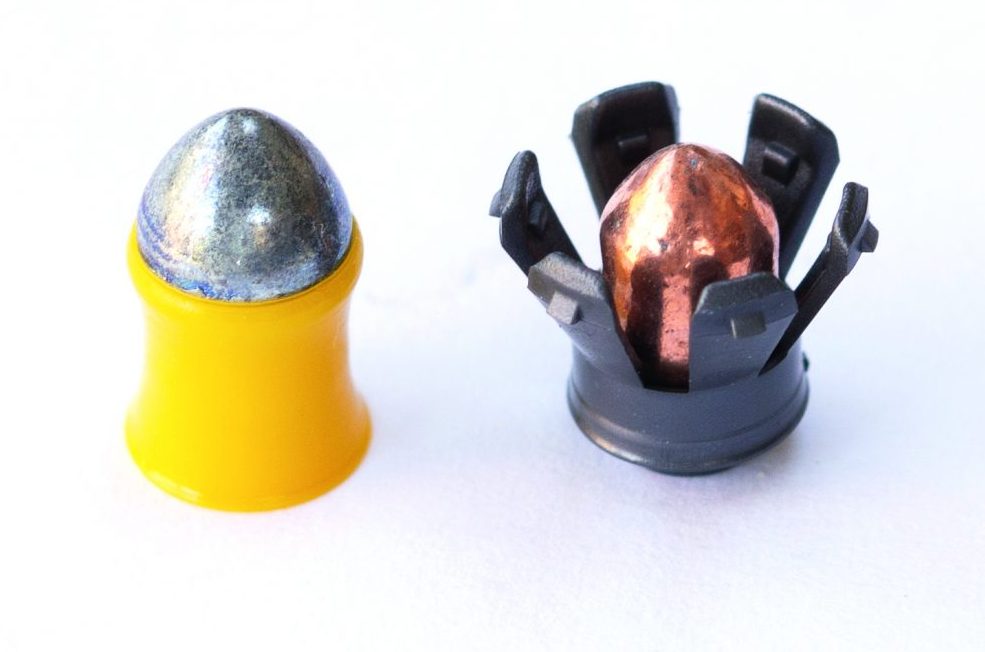
The Prometheus (left) was like nothing we’d seen before, and the Sussex Sabo beside it was even more radical
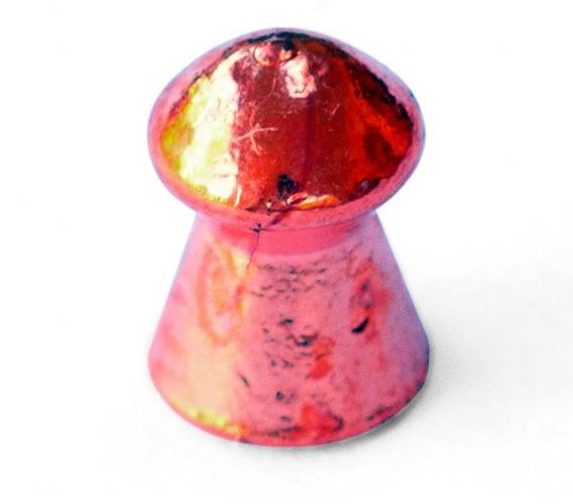
Copper coatings have been tried, but seem to make no difference to performance. It does keep the lead off your fingers though
The advertising claimed simultaneously the deepest penetration with the greatest expansion; mutually exclusive qualities in any other world. Oh, and by the way, match grade accuracy too! A modest claim, I’m sure you’ll agree. In my tests, the accuracy was OK, but no way good enough to hunt with, and in terminal ballistics tests, none of the claims were observed. The tip sometimes detached and the airgun pellet sometimes was found off axis, but expansion was never observed.
Strange that so many other manufacturers should have followed their lead, but follow they did.
You’ll see from the photos that many tried to copy, and I’m sure that they sold plenty of tins, but the facts speak for themselves when it comes to real world tests. Accuracy trumps every other factor when it comes to airgun hunting.
Trying something new
A couple of novelty airgun pellets deserve an honourable mention. The first is the Beeman Ram Jet, which had some right ideas as a long-bodied roundhead, but with a raised shoulder where it contacted the barrel. Beeman claimed that this would catch the edge of a steel target.
The second is the outrageous Bisley Bullet which looked like a little dumpy mushroom. In an effort to improve velocity retention, the domed head was shaped, well, like a bullet – which was a nice idea in theory but by moving the contact points of the head and skirt so close together, I suspect that the pellet never stabilised in the barrel. Accuracy was, well, dreadful.
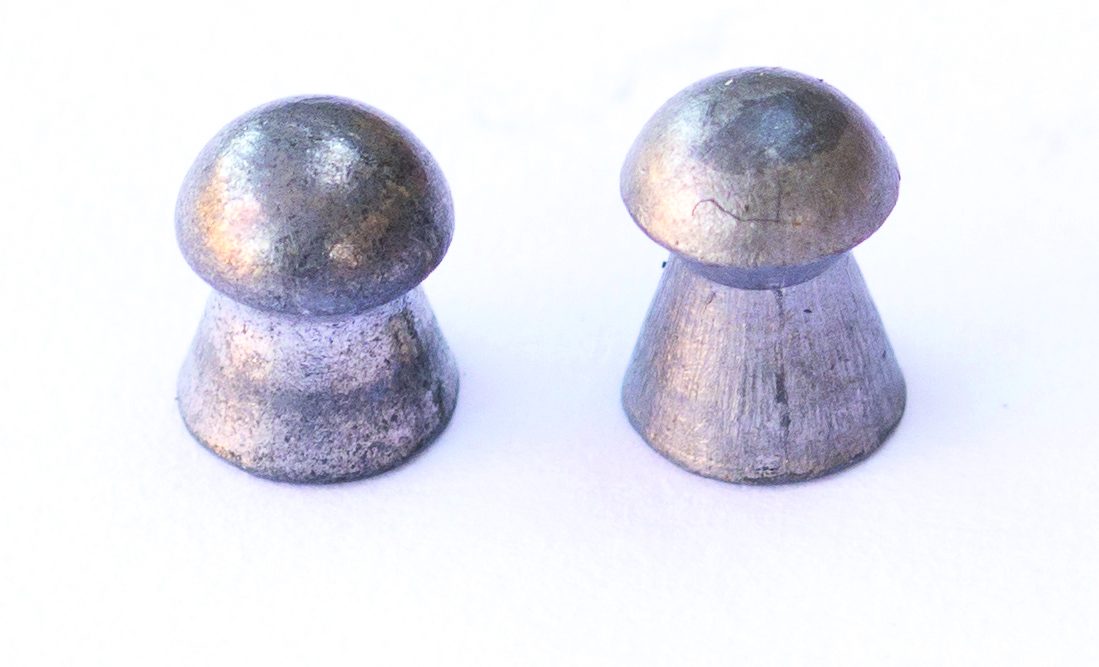
The Crosman Premier (left) was the first of the modern super-pellets, but its crown was eventually taken by the Air Arms Diabolo Field (right)
Perhaps you’re asking: “If none of these were good enough, then what is?” Every path I’ve followed has led me back to high-quality roundhead pellets. The first of the superstar roundheads was the Crosman Premier, which was a short body roundhead, and for a while everybody was shooting them, from the Field Target competition folks through to all the serious hunters. Then the Air Arms Diabolo Field came along and accuracy and ballistic coefficients improved just enough to make us change. They clearly got it right the first time, because it’s still the number one pellet for me in every rifle I use, and despite some good efforts to compete with them, they remain the best I’ve ever tried.
It’s quite funny to think that after all those years and all the pellets I’ve tried, in reality I’ve gone full circle back to where I began, with a simple roundhead design. Of course, the modern ones are infinitely better made, but in essence are the same thing.
That being said, I can never resist trying out something new, and wherever I go I always look out for “the next big thing”, be that in various gun shops, or at the major shooting shows across the UK and Europe. Because you never know, there might be something out there…
If you’re looking for the perfect pellet, you might find it in our list of the best airgun pellets
Related Articles
Get the latest news delivered direct to your door
Subscribe to Shooting Times & Country
Discover the ultimate companion for field sports enthusiasts with Shooting Times & Country Magazine, the UK’s leading weekly publication that has been at the forefront of shooting culture since 1882. Subscribers gain access to expert tips, comprehensive gear reviews, seasonal advice and a vibrant community of like-minded shooters.
Save on shop price when you subscribe with weekly issues featuring in-depth articles on gundog training, exclusive member offers and access to the digital back issue library. A Shooting Times & Country subscription is more than a magazine, don’t just read about the countryside; immerse yourself in its most authoritative and engaging publication.






